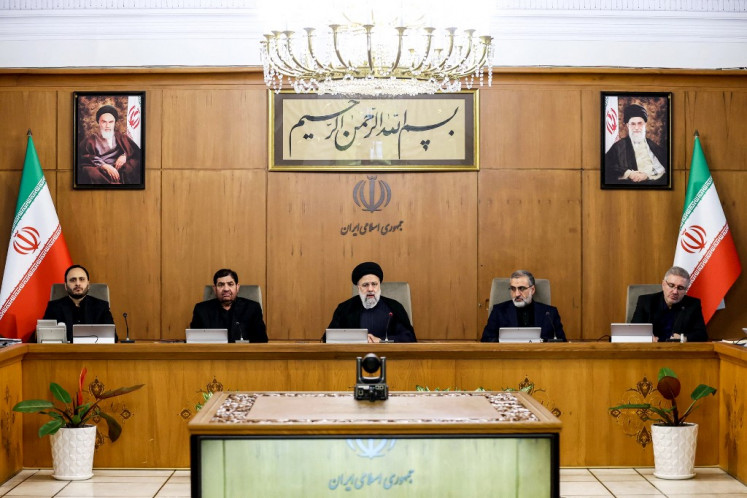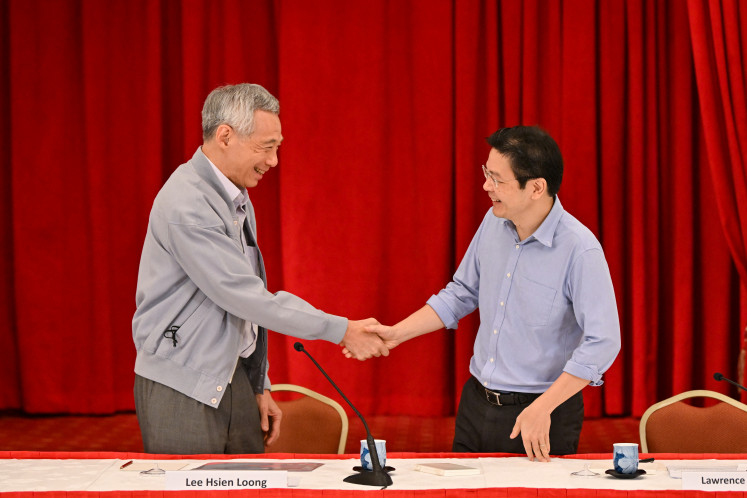The missing nuts and bolts of defense reform
By the end of January, the Defense Ministry's 100-day program will expire, with key milestones seemingly drowned out by the domestic m*l*e over President Yudhoyono's characteristic indecision
Change Size

B
y the end of January, the Defense Ministry's 100-day program will expire, with key milestones seemingly drowned out by the domestic m*l*e over President Yudhoyono's characteristic indecision.
More disconcerting, however, is that the ministry seems unable to move away from the existing trend over the past decade of sidelining the key nuts-and-bolts issue of defense reform.
A study by noted security watchdog Pacivis shows that on average, military reform efforts have dealt largely with normative and substantive issues - such as the abolishment of the "Dual Function" doctrine - while only 9 and 2 percent respectively touched on defense economic and force structure issues.
These oversights have significant ramifications in our overall defense planning and ability to narrow the strategic gap between the TNI and the increasingly sophisticated regional forces.
As such, if we are serious about "transforming" our forces, then we need to outline detailed, long-term policies in the areas of strategic direction, force development, force employment, force management and corporate support.
First and foremost, we need to consider new models of strategic policymaking and governance in the defense establishment.
These models should speak to us beyond the vague concepts of forming a "professional" military - and instead be able to tell us just how well and how prepared the TNI is in doing its job.
Specifically, such models should clearly measure and assess the changing strategic environment and our level of readiness in dealing with them.
Besides informing us about the technical proficiency of our "hardware", it should also tell us about the cohesion level, combat effectiveness and credibility of our entire forces.
More importantly, it must also have a built-in feedback system that can calculate the entire spectrum of defense risk, requirement and environment.
Perhaps implementing a defense balanced scorecard could be a good first step. Originating from the business world, the term "balanced scorecard", say initiators Robert Kaplan and David Norton, reflects the balance provided between short- and long-term objectives, between financial and non-financial measures, between lagging and leading indicators, and between external and internal performance initiatives.
In short, the scorecard helps organizations translate strategy into the operational objectives that drive both behavior and performance - a tool to report and manage organizational performance.
Applied to the defense context, we could measure the balance among the competing goals of force management, institutional requirements, operational needs and future challenges.
Bottom line, though clearly not straightforward, creating new measurement tools such as the balanced scorecard could enhance our strategic judgment and drive improvement activities.
These defense analytical tools, however, need to be placed within the overall effort to revamp corporate support over at the Defense Ministry and service headquarters to provide detailed, better planning and assistance.
Second, we need to start paying attention to platform commonality in our military equipment.
Publicly available studies show that by the end of 2004, Indonesia had 173 types of weapons systems from 17 different countries. To continue our weapons buildup and modernization without creating an integrated long-term plan to phase out such platform diversity might be counterproductive in the long run.
Not only would problems of interoperability crop up from time to time, but it would also strain our defense budget.
Conversely, a recent RAND Corp. study notes that increasing the level of military commonality could increase operational flexibility as shared components suggest improved readiness and shared operational capabilities, reduce the procurement burden by reducing the number of components to be developed or purchased, and possibly reduce the logistical and training burden as well.
Finally, we need to reform our defense acquisition policy beyond the existing stopgap measures of committing to revitalize defense industries.
On a broader scale, defense economists Curie Maharani and Ron Matthews recently suggested in Defense Review Asia that Indonesia should boost investment in defense technology and R&D (both physical and human), create an effective and sustainable defense funding model, integrate defense policy and platform acquisitions, and broaden and deepen defense industrial structures.
These policies, however, might need a further empowered Directorate General for Defense Resources as the single, highest executive agency responsible for the contracting and management of all weapons programs, from initial inception to planning and delivery, to export sales.
Another requirement is to recruit the nation's best and brightest scientific and engineering talent into such an agency. This is crucial, for instance, to level the playing field in dealing with the local and global defense industry.
Without such new blood, our defense planners would be hard-pressed to adjust to any high-tech venture in the near future. Sadly, however, state-owned strategic industries - much like the TNI - have not been able to attract these cr*me de la cr*me, mainly due to the absence of attractive remuneration packages.
All the above are only some of the main technical points of defense reform we need to tackle. Clearly there is a whole host of other complicated factors and issues, such as personnel planning and military education.
But the above initiatives could perhaps be the first step in the long, winding journey of transforming the TNI. And unless these nuts-and-bolts issues are addressed publicly, we will always ponder whether our military reform has been successful.
Dwight D. Eisenhower was once quoted saying, "Planning is everything - plans are nothing."









